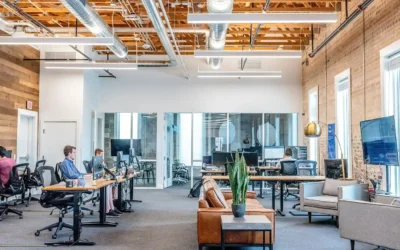Web Design for Business: A Comprehensive Guide
ghifari
July 28, 2024
7 min read

In the modern digital age, a well-designed website is crucial for any business aiming to succeed. A website not only serves as the online face of a company but also acts as a powerful marketing tool that can attract and convert visitors into customers. This article delves into the importance of web design for business and provides practical insights for those looking to start their own web design business.
The Importance of Web Design for Business
First Impressions Matter
When potential customers visit a website, the design significantly influences their first impression. A professional and aesthetically pleasing website conveys trustworthiness and competence, which are essential for establishing credibility. On the other hand, a poorly designed website can drive visitors away, costing the business potential leads and sales.
Enhances User Experience
Good web design goes beyond aesthetics; it focuses on providing an excellent user experience. This includes easy navigation, fast load times, and mobile responsiveness. A user-friendly website keeps visitors engaged, encourages them to explore further, and ultimately increases the chances of conversion.
Boosts Search Engine Rankings
Search engines, like Google, consider various aspects of a website’s design when determining search rankings. Factors such as mobile-friendliness, page speed, and user experience play a significant role in SEO. A well-designed website that meets these criteria is more likely to rank higher in search results, driving more organic traffic to the business.
Supports Branding and Consistency
A website is an extension of a company’s brand. Consistent use of colors, fonts, and imagery across the website reinforces brand identity and helps in building a memorable image. A strong brand presence can differentiate a business from its competitors and foster customer loyalty.
How to Start a Web Design Business
Starting a web design business can be a rewarding venture for those with a passion for creativity and technology. Here’s a step-by-step guide to help you launch your own web design business.
1. Develop Your Skills and Knowledge
Before starting a web design business, it’s crucial to have a solid foundation in web design principles and techniques. Here are some steps to help you develop your skills:
- Learn the Basics: Start by learning HTML, CSS, and JavaScript. These are the building blocks of web design and development.
- Master Design Tools: Familiarize yourself with popular design tools like Adobe Photoshop, Illustrator, and Sketch. These tools are essential for creating high-quality web designs.
- Stay Updated: The web design industry is constantly evolving. Keep up with the latest trends, tools, and technologies by following blogs, taking online courses, and participating in webinars.
2. Define Your Niche
Web design is a broad field, and specializing in a particular niche can help you stand out from the competition. Consider focusing on specific industries such as e-commerce, real estate, or healthcare. Alternatively, you can specialize in certain types of design work, like UX/UI design, mobile app design, or responsive web design.
3. Create a Business Plan
A well-thought-out business plan is essential for any successful venture. Your business plan should include:
- Executive Summary: An overview of your business, including your mission statement and goals.
- Market Analysis: Research your target market and competitors to identify opportunities and challenges.
- Services and Pricing: Define the services you’ll offer and your pricing strategy. Consider offering different packages to cater to various client needs and budgets.
- Marketing Strategy: Outline your plan for attracting and retaining clients. This may include online marketing, networking, and partnerships.
- Financial Plan: Estimate your startup costs, projected revenue, and expenses. This will help you determine how much capital you’ll need to start and sustain your business.
4. Build Your Portfolio
A strong portfolio is crucial for showcasing your skills and attracting clients. Start by creating sample projects or offering your services to friends, family, or local businesses at a discounted rate. Make sure to include a variety of projects that highlight your versatility and expertise.
Your portfolio should include:
- Project Descriptions: Briefly describe each project, including the client’s goals and how you addressed them.
- Visuals: Include screenshots, mockups, and links to live websites.
- Testimonials: Positive feedback from clients can boost your credibility and appeal to potential clients.
5. Establish Your Brand
Your brand identity sets you apart from competitors and helps you connect with your target audience. Consider the following elements when establishing your brand:
- Business Name: Choose a name that reflects your services and is easy to remember.
- Logo and Visual Identity: Design a professional logo and select a consistent color scheme and typography for your branding materials.
- Website: Create a professional website to showcase your portfolio, services, and contact information. Your website should reflect your design skills and serve as an example of your work.
6. Register Your Business
To operate legally, you’ll need to register your business and obtain any necessary licenses or permits. The requirements vary depending on your location, so check with your local government for specific regulations.
7. Set Up Your Workspace
While you can start a web design business from home, it’s essential to create a dedicated workspace to boost productivity. Ensure you have:
- Reliable Equipment: Invest in a high-quality computer, monitor, and other necessary equipment.
- Design Software: Purchase licenses for the design tools you’ll use.
- Comfortable Environment: Set up a comfortable and ergonomic workspace to work efficiently.
8. Market Your Business
Effective marketing is key to attracting clients and growing your web design business. Consider the following strategies:
- Online Presence: Create profiles on social media platforms like LinkedIn, Facebook, and Instagram to showcase your work and connect with potential clients.
- Content Marketing: Start a blog on your website to share insights, tips, and case studies related to web design. This can help establish you as an expert in your field and improve your search engine rankings.
- Networking: Attend industry events, join professional organizations, and participate in online forums to connect with other professionals and potential clients.
- Referrals: Encourage satisfied clients to refer you to others. Word-of-mouth marketing can be a powerful tool for attracting new clients.
9. Provide Excellent Customer Service
Building strong relationships with your clients is essential for long-term success. Focus on providing excellent customer service by:
- Communicating Clearly: Keep clients informed about project progress and address any concerns promptly.
- Meeting Deadlines: Deliver projects on time and within budget.
- Going the Extra Mile: Exceed client expectations by offering additional value, such as free maintenance or minor updates after project completion.
10. Continuously Improve
The web design industry is dynamic, and staying ahead of the curve is crucial for success. Continuously improve your skills and business practices by:
- Seeking Feedback: Ask clients for feedback on your work and use it to make improvements.
- Learning and Growing: Invest in your professional development by taking courses, attending workshops, and staying updated on industry trends.
- Adapting to Change: Be flexible and willing to adapt your services and strategies to meet changing market demands and client needs.
Conclusion
Starting a web design business requires a blend of creativity, technical skills, and business acumen. By developing your skills, defining your niche, creating a solid business plan, and effectively marketing your services, you can build a successful web design business that stands out in a competitive market. Remember, continuous improvement and exceptional customer service are key to long-term success in the ever-evolving world of web design.
At Available Dev, we offer comprehensive web development services, including a thorough web design process tailored to meet your business needs. Whether you’re starting a new venture or looking to enhance your online presence, our team of experts is here to help you create a stunning, user-friendly website that drives results. Contact us today to learn more about how we can assist you in achieving your web design goals.
Related Article
What is a Web Designer Responsible For?
In the digital age, a web designer plays a crucial... In the digital age, a web designer plays a crucial role in creating and maintaining the face of the internet....
How to Choose a Web Design Company: A Comprehensive Guide
Choosing the right web design company can be a daunting... Choosing the right web design company can be a daunting task, especially with the plethora of options available today. Your...
What is a Modal in Web Design?
Web design is a dynamic field that constantly evolves to... Web design is a dynamic field that constantly evolves to enhance user experience and engagement. Among the various tools and...



